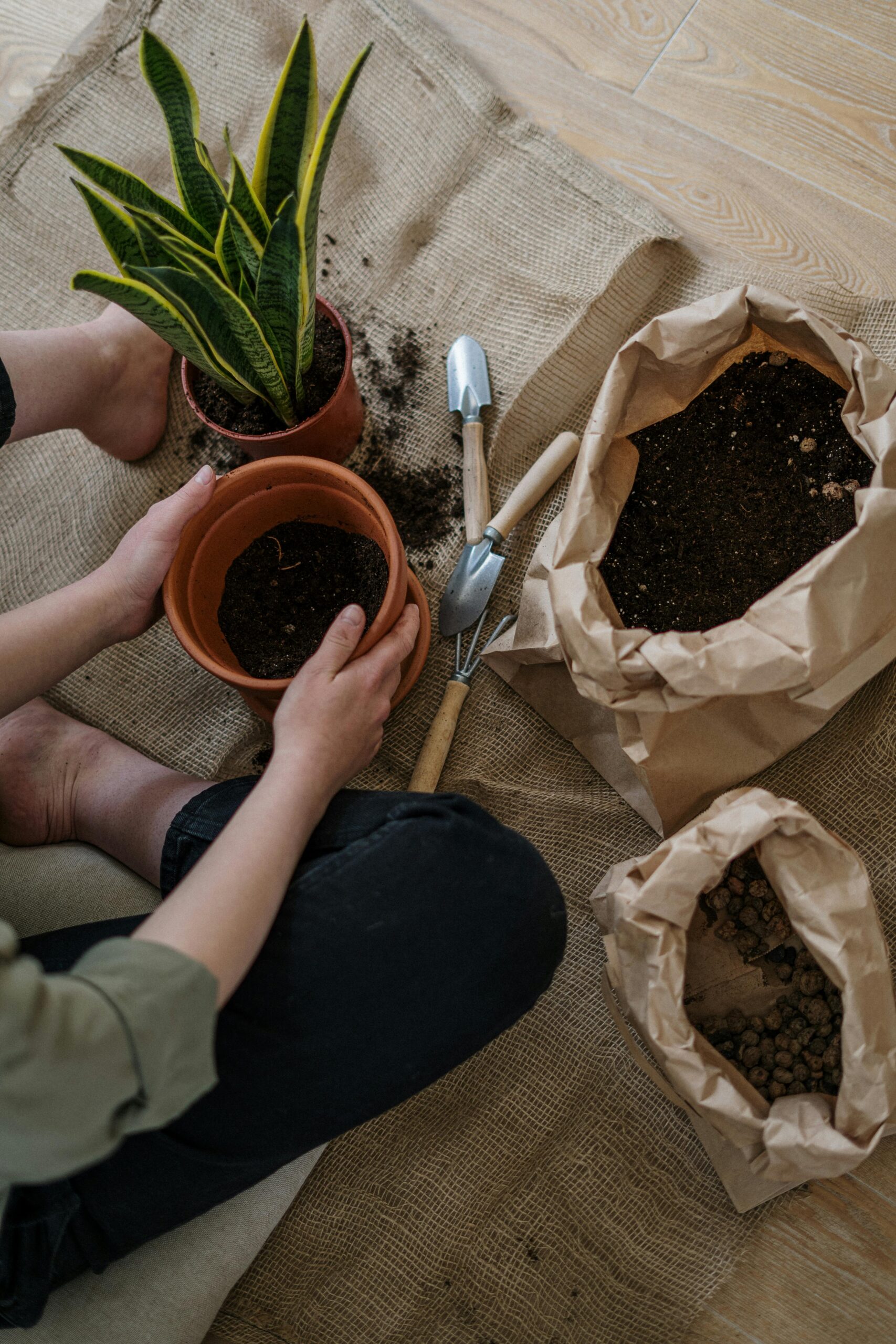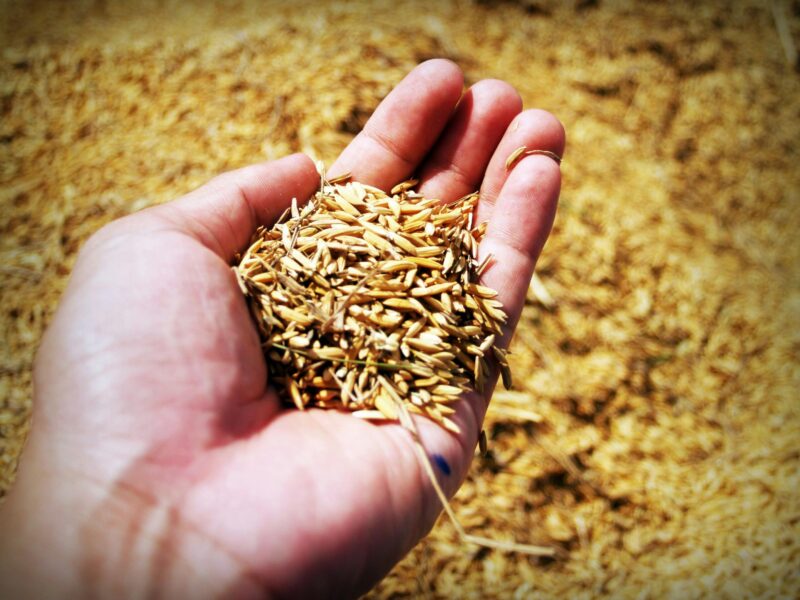A zero-waste garden is not just a trend; it’s a sustainable approach to gardening that minimizes waste, reduces environmental impact, and promotes a healthy ecosystem. By adopting zero-waste principles, gardeners can create a thriving garden that supports biodiversity, conserves resources, and enriches the soil, all while reducing the amount of waste sent to landfills. In this guide, we’ll explore key practices like composting, water conservation, and smart planting techniques that can help you transform your garden into a zero-waste paradise.
What is a Zero-Waste Garden?
A zero-waste garden aims to eliminate waste through thoughtful planning, sustainable practices, and closed-loop systems. The goal is to create a self-sustaining ecosystem where every element is reused, recycled, or composted, minimizing the need for external inputs. A zero-waste garden focuses on:
- Reducing Waste: Minimizing the use of single-use plastics, synthetic fertilizers, and non-biodegradable materials.
- Reusing Resources: Repurposing garden materials, such as pots, stakes, and containers.
- Recycling Organic Matter: Composting plant and kitchen waste to enrich the soil.
- Conserving Water: Using efficient watering techniques and choosing drought-tolerant plants.
- Promoting Biodiversity: Planting a variety of plants to attract beneficial insects and create a balanced ecosystem.
By following these principles, you can create a beautiful, productive garden that is in harmony with nature.
1. Start with Composting: Turn Waste into Black Gold
Composting is at the heart of any zero-waste garden. It’s a natural process that transforms kitchen scraps, garden waste, and other organic materials into rich, fertile compost that improves soil structure, retains moisture, and provides essential nutrients for plants.
- Set Up a Compost Bin: Choose a compost bin or pile that suits your space and needs. You can use a traditional compost bin, a tumbler, or even a simple heap in a corner of your garden. Ensure the bin is in a location that is easy to access and receives adequate airflow.
- Know What to Compost: Add a mix of green materials (nitrogen-rich) like fruit and vegetable scraps, grass clippings, and coffee grounds, and brown materials (carbon-rich) like dried leaves, straw, and cardboard. Avoid adding meat, dairy, and oily foods, as they can attract pests.
- Maintain Your Compost Pile: Keep your compost pile moist, but not waterlogged, and turn it regularly to provide oxygen and speed up decomposition. In a few months to a year, you’ll have nutrient-rich compost that can be added to your garden beds.
- Use Compost Wisely: Spread compost around plants as mulch or mix it into the soil to improve fertility and structure. Compost can also be used to make compost tea, a nutrient-rich liquid fertilizer that supports healthy plant growth.
2. Conserve Water: Smart Irrigation and Rainwater Harvesting
Water is a precious resource, and conserving it is a critical aspect of zero-waste gardening. Implementing efficient watering practices not only reduces water waste but also promotes healthier plants and soil.
- Install a Rain Barrel: Collect rainwater from your roof using a rain barrel or other rainwater harvesting system. Rainwater is naturally soft, free of chemicals, and ideal for watering plants. Use it to water your garden during dry spells or to reduce reliance on municipal water supplies.
- Use Drip Irrigation or Soaker Hoses: Traditional sprinklers can waste a lot of water through evaporation and runoff. Drip irrigation and soaker hoses deliver water directly to the plant roots, minimizing waste and ensuring efficient water use.
- Mulch to Retain Moisture: A thick layer of organic mulch, such as straw, wood chips, or shredded leaves, helps retain soil moisture, reduces evaporation, and keeps the soil cool. This can significantly reduce the need for frequent watering.
- Choose Drought-Tolerant Plants: Select native and drought-tolerant plants that require less water and are better adapted to your local climate. Once established, these plants will thrive with minimal watering, reducing the overall water demand in your garden.
3. Reduce, Reuse, Recycle: Embrace Sustainable Gardening Practices
Adopting sustainable gardening practices is key to creating a zero-waste garden. Focus on reducing the use of non-biodegradable materials, reusing what you already have, and recycling materials whenever possible.
- Reduce Plastic Use: Minimize the use of single-use plastics in the garden. Opt for biodegradable plant pots, reusable seed trays, and organic twine. Avoid plastic plant labels and use natural alternatives like wooden stakes or flat stones.
- Repurpose and Reuse Materials: Look for creative ways to reuse materials in your garden. Old containers, buckets, or even broken pots can be repurposed as planters. Wooden pallets can be turned into vertical gardens or compost bins, and old tires can be used to create raised beds.
- Recycle Organic Waste: Recycle all organic waste, including grass clippings, leaves, and kitchen scraps, by composting them or using them as mulch. These materials break down and enrich the soil, reducing the need for synthetic fertilizers.
- Buy Second-Hand or DIY: Instead of buying new garden tools and equipment, consider purchasing second-hand or building your own. You can create raised beds from reclaimed wood, make a trellis from pruned branches, or craft plant markers from recycled materials.
4. Plant Smart: Companion Planting and Crop Rotation
Planting strategies like companion planting and crop rotation help create a balanced garden ecosystem, reduce pest problems, and improve soil health without the need for chemical inputs.
- Companion Planting: Grow plants that benefit each other when planted together. For example, marigolds can repel nematodes and aphids, while basil planted near tomatoes can enhance flavor and deter pests. Companion planting helps create a more resilient and diverse garden.
- Crop Rotation: Avoid planting the same crops in the same spot year after year, as this can deplete soil nutrients and increase the risk of pests and diseases. Rotate crops to different garden beds each season to maintain soil health and reduce pest pressure.
- Grow Perennials: Incorporate more perennial plants like rhubarb, asparagus, berries, and herbs into your garden. Perennials return year after year, reducing the need for replanting and providing long-term harvests with minimal maintenance.
5. Attract Beneficial Wildlife: Create a Balanced Ecosystem
A zero-waste garden should support a diverse range of wildlife, from pollinators to predatory insects, birds, and small mammals. By attracting beneficial wildlife, you create a balanced ecosystem that naturally controls pests and enhances pollination.
- Plant Pollinator-Friendly Flowers: Grow a variety of nectar-rich flowers to attract bees, butterflies, and other pollinators. Plants like lavender, echinacea, and sunflowers are great choices for providing food and habitat for pollinators.
- Create a Wildlife Habitat: Include features like birdhouses, bee hotels, and water sources like bird baths or small ponds to attract beneficial wildlife. A healthy population of birds, frogs, and predatory insects will help control pests in your garden.
- Avoid Chemical Pesticides: Chemical pesticides can harm beneficial insects and pollinators. Instead, use organic pest control methods like neem oil, insecticidal soap, or introducing beneficial insects like ladybugs and lacewings.
6. Close the Loop: Make Your Garden Self-Sufficient
The ultimate goal of a zero-waste garden is to create a closed-loop system where everything is reused, recycled, or composted, and nothing is wasted.
- Seed Saving: Save seeds from your healthiest plants to grow next season. This practice not only saves money but also preserves heirloom varieties and adapts plants to your specific garden conditions.
- Make Your Own Fertilizer: Create homemade fertilizers using compost tea, worm castings, or comfrey and nettle tea. These natural fertilizers provide essential nutrients without the need for synthetic chemicals.
- Grow Your Own Mulch: Plant cover crops like clover, alfalfa, or buckwheat, which can be cut and used as mulch or composted to add organic matter to the soil.
Creating a zero-waste garden is not just about reducing waste; it’s about embracing a sustainable, mindful approach to gardening that works in harmony with nature. By composting, conserving water, reducing plastic use, attracting beneficial wildlife, and creating a closed-loop system, you can transform your garden into a thriving, self-sufficient ecosystem. Start with small changes, experiment with different techniques, and enjoy the process of making your garden as sustainable and waste-free as possible. Happy gardening!


